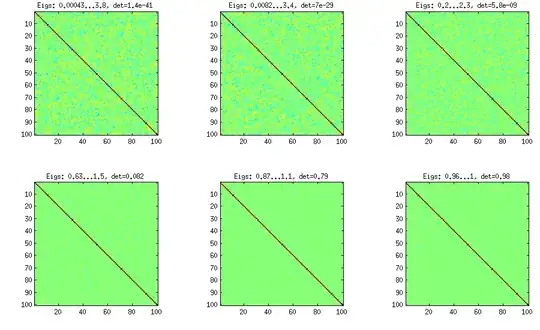Consider the following simulation experiment:
In order to estimate the area ($\theta$) of a circle drawn somewhere on a square of known side=10, a collection of random vectors $(X_i,Y_i), i=1,...,10$ are generated. Each $X_i$ and $Y_i$ are iid $\text{Uniform}[0,10]$.
From this, iid random variables $Z_i$ are obtained. Each $Z_i$ is $1$ if $(X_i,Y_i)$ is within the circle and $0$ otherwise.
I asked a version of this questions earlier and the comments below have been very helpful in getting me to an answer. However, while reviewing it again today, I encountered an issue that I would like to ask about.
From comments below, I got that the $Z_i \sim \text{Bern}(\theta/100)$ where $\theta$ is the area of the circle. Using this, I was able to get the estimator $100\frac{\sum_{i=1}^{10} z_i}{10}$ and prove that this is unbiased for $\theta$.
I was also able to show that $\sum_{i=1}^{10} Z_i$ is a sufficient complete statistic for $\theta$ and so $100\frac{\sum_{i=1}^{10} z_i}{10}$ is UMVUE for $\theta$.
However, if I use this estimator I can end up with an estimate of the area that is not possible (one larger than the largest possible circle). That is if all or almost all my points happen to fall in the circle (8, 9 or 10), I can get an estimate that's $(>25\pi)$.
My question is this: why isn't $25\pi\frac{\sum_{i=1}^{10} z_i}{10}$ a better estimator of $\theta$? This never gives an impossible value.
If I let my $Z_i's$ be $Bern(\frac{\theta}{25\pi})$ I think the rest of the solution for all of the requirements of the problem will follow, but I can't seem to justify that when the instruction of the problem is to have $Z_i$ be the indicator function that the point $(X_i,Y_i)$ is in the circle.
